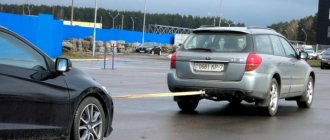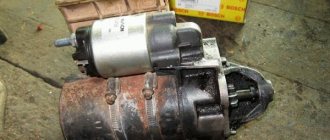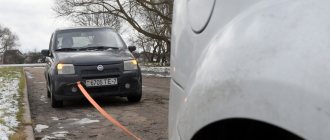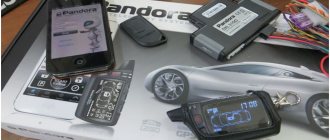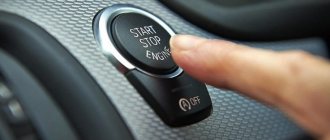Those who recently studied at a driving school to get a license were faced with the practice of driving around the city. This is where most instructors teach you to pull away using only one clutch.
However, this is not always sufficient. Currently, there are many videos on the World Wide Web, during which it becomes clear how to start a manual car for beginners from scratch.
To get a more accessible video or instructions on the Internet, it is recommended to search for how to start a car manually for dummies. It is then that a huge list will open, where each clip will explain in detail how to start the car to a mechanic in the form of step-by-step instructions.
How to properly start a manual car in cold weather
It is recommended to start moving as soon as possible during the cold season. This will help to operate the vehicle more correctly and will not create any interference for other road users. In order to start moving, you need to use not only the clutch, but also slightly apply the gas.
When starting off using only one clutch, the nature of the road surface is important. In cases where there are no unevenness or additional obstacles on the roads, when it is a complete and smooth road surface, it is recommended to move away only with the clutch. But this is in cases where the road is very smooth, which is rare in modern reality.
What to check before traveling
Before you start driving a car, you need to prepare for the trip and check the car. For experienced drivers, this procedure takes only a couple of minutes, but many beginners forget about its necessity and immediately start the car.
Before opening the driver's door, you need to conduct an external inspection of the car. Make sure that all wheels are inflated and there are no leaks under the bottom of the car. A flat tire or brake fluid leak poses a huge danger to the driver. It is also worth checking the operation of the lighting devices, both front and rear.
After you sit in the driver's seat, you need to adjust the seating position. An uncomfortable driving position while driving can not only cause inconvenience, but also prevent you from reacting in a timely manner to changes in the traffic situation.
- Adjust the position of the driver's seat. Your feet should rest comfortably on the pedals; if you have to pull your foot up to them, you need to move the chair forward. There is also no need to move the chair too much, otherwise it will be inconvenient to move your foot from one pedal to another. If the car has such a function, then you can adjust the seat height of the driver's seat.
- The position of the steering column is also important. Your arms should rest comfortably on the steering wheel in an extended position. If the car settings allow it, then adjust the height of the steering column and the reach of the steering wheel.
- Adjusting the rear view mirrors, both side and interior mirrors, is also of great importance. Don't forget about the mirror on the passenger side, it also improves rear view and allows you to control the movement of the car.
- And the last detail - fasten your seat belt and force all passengers in the car to do so.
How to start a manual car step by step for beginners
Before starting the vehicle, it is recommended to put the car in neutral, most often this is the middle gear shift position in the gearbox. This is done for the purpose of disconnecting the car from the transmission.
An experienced driver will immediately note that the same result can be achieved by depressing the clutch pedal. In this case, you need to be prepared and keep your hand on the handbrake or your foot on the brake, since if you start moving down a hill or bump, the car can be pulled back, which can lead to a traffic accident out of the blue.
After that, the key is inserted into the ignition switch and turned clockwise to start. When the ignition is turned on, the gauges on the dashboard will light up, indicating that it is working properly. Then the key must be turned even more until the starter starts.
How to start an engine without a battery from a tow?
Only vehicles equipped with a manual transmission can be towed. Starting a car with an automatic transmission like this is fraught with its breakdown!
To normally start a car from a tow, it is enough to follow the algorithm that will be discussed below, but if there is no battery, you will need any power source that produces 10-15 volts. To start a car without a battery (without a battery at all or with a completely non-working one) from a tow, you need to connect the power source with the plus to the excitation of the generator (a separate thin wire to it), and the minus to ground.
If there is a battery, but it does not work at all due to internal short circuits, it must be disconnected, and the “+” terminal must be securely isolated from the body to avoid a short circuit.
After this you need:
- Turn off all possible consumers (lights, music, stove).
- Turn on the ignition.
- Start the car from a tow or pusher.
- Remove the battery used for excitation, without turning off the engine, and drive.
How to properly drive without a battery so as not to damage the car, read in the final part of this article.
On a carburetor with a mechanical fuel pump, such an emergency engine start is usually carried out without problems, since the engine is simple and has only an ignition system from electronics. But the answer to the question whether it is possible to start a car without an injector battery directly depends on whether the generator will provide the required current to the fuel pump and ECU at the start.
How to start correctly from a tugboat?
Launching a car from a tow
- Connect the car to the tow using a cable.
- Turn on the ignition.
- Engage 2nd or 3rd gear and continue to hold the clutch.
- Give the command to move off to the tug driver (it is better to agree on the commands in advance, since the headlights and signal are not available without sufficient power supply).
- After gaining sufficient speed (optimal for the selected gear), release the clutch and wait for the engine to start confidently.
- Give the command to stop to the driver of the towing car, unhook the cable after stopping.
The lower the gear is engaged, the higher the speed and torque are transmitted from the wheels. It is better to start a cold engine in second gear, and a warm engine can easily start in third.
It is not recommended to start the car from a tow or pusher in first gear. Firstly, the engine resistance in this mode is higher and it will be harder to push. Secondly, there is a risk of the timing belt breaking or slipping due to a sudden change in loads.
How to start without lighting a manual
Starting a car without a manual battery, if there is nothing to light it from, is possible in the following ways:
- from the pusher;
- from a tug;
- from a crooked starter (on some older cars).
If there is no battery at all or it does not show any signs of life, starting the car without a battery is only possible using the method outlined above (at least some weak power source to excite the generator).
You can quickly start the battery without lighting it manually when starting from a pusher on gasoline cars with a carburetor. The injector will have to be pushed longer (which is difficult), since it needs time for the pump to pump gasoline into the ramp. Starting a diesel engine with a mechanical injection pump using this method from a pushrod is difficult due to the high compression in the cylinders, which significantly complicates cranking the engine.
If a diesel engine is equipped with electronic injection on a Common Rail ramp, starting it without a battery from a pusher is almost impossible. In such cases, only a towing vehicle can handle it.
There are three options for starting the car if the battery is dead without lighting the injector:
- start with a pushrod, as in the case of a carburetor;
- spin the motor with a cable wound around the wheel;
- start the engine from a tug, attached to another car.
Starting the engine using a cable on the wheel
To start a car with a dead battery from a cable, you will need at least 3 meters (a flat towing cable is better and the longer the better), a jack (to lift the car from the side on which it will be wound up) and a safety net for the second wheel.
The startup process is as follows:
Starting the engine using a cable
- We jack up one drive wheel, slightly turning its front part outward (so that the cable does not cling to the fender or bumper).
- We block the driven wheels with a handbrake and additional stops (shoes, stones, bars).
- We wind the cable tightly around the wheel against its rotation, so that when you pull the cable, it rotates forward.
- Turn on the ignition and 3rd gear.
- We pull the cable so that the wheel begins to rotate forward and spin the engine.
There is no need to hook the cable to the wheel; it should easily fly off after unwinding. You should also not wrap it around your hand or loop it around your wrist to avoid injury!
How to start without lighting a diesel engine with manual transmission
Starting the car using a jump starter
Starting a diesel internal combustion engine with a manual transmission from a pusher is difficult, since the compression in its cylinders is approximately twice as high as a gasoline engine (25-30 atmospheres, versus 10-15). This is additional resistance. Therefore, in order to push or twist a wheel alone, you must have heroic strength and endurance.
To start a diesel engine without the help of strong assistants who can gain good speed and overcome the resistance of the pistons, you will have to cling to a tow. But here the process can also be complicated by the fact that a cold engine will not start without warming up the glow plugs. So, without a donor battery or starting device, starting a diesel engine is very problematic.
How to start without lighting a car
When the question arose of how to start a car without a battery, the answer will most likely be - no way ! Because from a pusher it’s generally unrealistic. Since even if the automatic transmission supports the forced start scenario, a person will not be able to accelerate the car to the desired speed. But basically, be it a classic torque converter, a variator or a modern DSG, they will not only not start, but may also break.
The exception is VAZ cars with a robotic gearbox 2182. They start in almost the same way as on a manual one, but the battery must be at least a little alive (so that the engine ECU turns on and the pump pumps up the gasoline pressure in the rail).
Automatic transmissions that can be started at least from a tug are not very common, and such a procedure does not make sense; it’s easier to borrow a battery or take the trouble to find someone to “light it with.” Or you will have to buy a battery. Paying 5 thousand rubles for a new battery is cheaper than what you would have to pay for the overhaul of a broken machine.
Starting a car with a continuously variable variator risks damaging the belt and gearbox pulleys, and the DSG gearbox can damage the servos.
How to start a car correctly as a mechanic for beginners
It is necessary to use a working car with working sensors, while the environment, climate and temperature are also important.
When the car moves smoothly, this shows the fact that the entire algorithm went in the right direction. You don’t need to immediately release or pull the clutch, since this will also affect the nature of the vehicle’s maneuvers; you need to smoothly release the clutch, pick up speed and switch it to move forward or backward.
This moment can be felt, for example, you press the clutch - the car starts moving, let go - after a few meters it gradually begins to stall and stops, so several times, squeezing the clutch, do not allow it to stall and stop.
Principle of operation
Let's go through each point one by one:
- The system turns off the immobilizer immediately after you send a request or at a scheduled time.
- The on-board network and battery charge level are assessed. Let's put an exclamation point on this, since new car models simply do not allow ignition when the charge level is below average.
- After a thorough check, the module starts up with fuel. Speaking of diesel engines, power is supplied to glow plugs.
- The unit connects the ignition systems and starter circuits after some time necessary for the formation of pressure in the fuel system and heating of the spark plugs.
- Information about the process comes to you in the form of sound or, if you are using the utility on a mobile phone, in the form of an image. In more expensive models they send a reason why the car did not start if something went wrong.
How to start a car manually
We take a sample car, put it in neutral and on the handbrake. Depress the clutch and turn the key in the ignition. At the same time, keep one foot near the brake and one hand near the handbrake. This is done in order to prevent possible movement of the funds backwards.
We apply gas, thereby giving the engine the required number of revolutions, and release the clutch, gradually, with increasing speed, smoothly release the clutch and switch the speed one higher. Using gas, it is best to maintain the optimal number of revolutions.
It is not recommended to overuse the clutch, as this creates additional stress, which can lead to faster vehicle failure.
It is also best to keep the speed in the recommended mode, since increased speed will not lead to anything good. This leads to rapid wear and decommissioning of the engine. For each sample, the optimal amount of turnover is different.
Lifehacks for beginners: getting started on a slope
Hills that are found on city and country roads cause certain difficulties for beginners. Because of the upward slope, many are afraid to start moving after a forced stop. Especially if there is a car behind.
In order not to get confused or scared in such a situation, practice driving uphill. For this:
- Press the clutch and shift into first gear.
- Lightly press the gas pedal as you begin to release the clutch.
- At the same time, raise the handbrake lever a little more without pressing the buttons on it.
- At the right moment, release the handbrake so that the car moves forward.
The engine speed should be higher than during a normal start, but not too high so that the car stalls. In this way you can start moving even on a steep climb.
Are you afraid that you won't be able to learn to drive? Contact the Moscow “Driving School 177”. Our instructors will teach you how to start in different conditions. Students can use a special training area to practice skills in a relaxed environment.
Possible breakdowns
It should be immediately agreed that the term “long downtime” is a relative concept. Therefore, we will separately consider starting the engine after different periods of parking, including long-term storage of the car. After parking the car for a long time, the following negative factors may appear:
- Battery discharge.
- Oxidized contacts.
- The piston rings are stuck in the pistons.
- Air penetration into the power supply system of diesel power units.
- Evaporation of gasoline from the carburetor body, or draining of fuel from the tank.
In addition to these well-known situations, you can also see the consequences of animal life. Even drivers who constantly use their cars may find that hoses or wires have been chewed by rats. There is a possibility that after such parking the car will not start for a long time.
Let's sum it up
After a long period of parking, before starting the engine you need to:
- Replace fuel.
- Change the engine oil.
- Charge the battery.
- Inspect seals and hoses.
- Inspect the bottom of the car and, if necessary, repair any leaks.
- Replace brake fluid.
- Inspect the brake linings and pads.
- Replace spark plugs.
- Inflate the wheels.
In most cases, a long downtime of a machine leaves its consequences, which will manifest themselves someday. To reduce the risk of their occurrence, the car must sometimes be warmed up and driven a little while parked for a long time.


